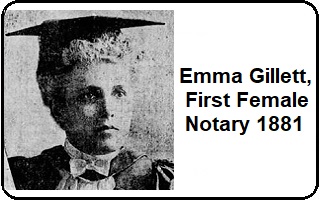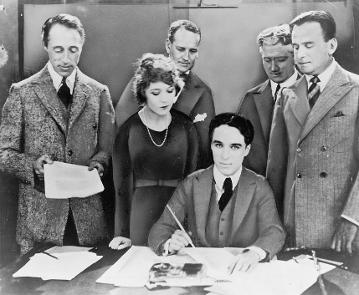What is a Notary Public?
A Notary Public is an official of integrity appointed by state government – typically by the secretary of state – to serve the public as an impartial witness in performing a variety of official fraud-deterrent acts related to the signing of important documents. These official acts are called notarizations or notarial acts.
What are Notarized Documents?
A notarized document is a document that has been certified by a notary public. The notary public is an official who verifies the identities of everybody signing the document, witnesses the signatures, and marks the document with a stamp (or “seal”).

Loans
Real Estate
Mortgages
Divorce
Affidavits
Sworn Statement
Quitclaim Deed
Statement of Consent
Power of Attorney
Deed of Trust
Advance Health Care Directive
Court Papers...and more.

How To Get Ready to Meet Your Notary?
Bring your state-issued ID with you. It must be current. Ask other parties to do the same. A notary is required to verify the identities of all parties signing the document. This is to prevent fraud.
-
A notary public must be able to verify your identity in order to notarize a document you are signing.
-
The primary purpose of a notary is to prevent fraud. After the notary verifies ID, the notary should scan the document for blank spaces and require the customer to fill in all the blanks, or write N/A, if not applicable. Notarizing a document before it is filled out is like writing a blank check and could be used by a criminal to do an unauthorized act.
-
Show up at the agreed-upon location. Wait for any other signers of the document to arrive. A notary may not proceed with notarizing your document until all parties are present. Make sure you're on time.
-
The notary must be able to communicate with the signer and determine if the signer understands the document and is signing voluntarily. The document does not have to be in English. If it is a sworn statement, the signer must swear that the statements in the document are true and correct. A notary does not read the document or offer any legal advice or legal opinion. All blank spaces must be filled in. The notary would write the title of the document in the notary journal and make a note in the journal of the foreign language used. Google Translate is a useful free tool that can translate 90 foreign languages.
-
Sign the notary's journal and provide right thumbprint.
-
Sign and date the document. Essentially, the notary will just watch all parties sign the document and then sign and stamp the document herself. They may also fill out a notarial certificate and/or a notarial journal in accordance with local laws. You may ask the notary to talk you through this part of her process.
-
Only after you have signed and the notary has verified your identity, will she sign and date the document and apply her seal.
-
After all parties have signed the document, the document will be legally binding.
-

What are the FEES?
Acknowledgment $15 per signature
Jurat $15 per signature
Travel $50 & up
What are Acceptable forms of ID in California?
From the State of California Notary Handbook:
The notary public can establish the identity of the signer using identification documents as follows (Civil Code section 1185(b)(3) & (4))
There is a reasonable reliance on any one of the following forms of identification, provided it is current or was issued within 5 years:
-
An identification card or driver’s license issued by the California Department of Motor Vehicles;
-
A United States passport;
-
An inmate identification card issued by the California Department of Corrections and Rehabilitation, if the inmate is in custody in California state prison;
-
Any form of inmate identification issued by a sheriff’s department, if the inmate is in custody in a local detention facility
There is reasonable reliance on any one of the following forms of identification, provided that it also contains a photograph, description of the person, signature of the person, and an identifying number:
-
A valid consular identification document issued by a consulate from the applicant’s country of citizenship, or a valid passport from the applicant’s country of citizenship;
-
A driver’s license issued by another state or by a Canadian or Mexican public agency authorized to issue driver’s licenses;
-
An identification card issued by another state;
-
A United States military identification card (caution: current military identification cards might not contain all the required information);
-
An employee identification card issued by an agency or office of the State of California, or an agency or office of a city, county, or city and county in California.
-
An identification card issued by a federally recognized tribal government.
-
*If no such ID is available and cannot be reasonably obtained, the signer may have TWO CREDIBLE WITNESSES WITH VALID IDENTIFICATION PRESENT who know the signer and can attest to who the signer is UNDER OATH.

Does the Signer’s Name Match the Document? (courtesy of the National Notary Association)
 “What do I do if the signer’s name on the document doesn’t match the name on the ID?”
“What do I do if the signer’s name on the document doesn’t match the name on the ID?”
People commonly change their names legally due to marriage, divorce or other reasons. Some also use casual or formal variations of their names in different circumstances. In cases where the document name and ID name do not agree, Notaries can use this information as a guide to resolve name discrepancies.
This is one of the most common questions Notaries ask — but it’s also one of the toughest to get a clear answer for, because most states don’t address it in their statutes.
At best, a law will say the signer’s ID must be on a list of acceptable IDs or must contain certain core elements such as a photograph, signature, serial number, and physical description. While you always must follow these rules, they don’t address some of the real practical issues that arise when a name on a document and the name on the ID don’t match exactly.
However, two states — California and Florida — have language in their statutes that can be helpful. Both state’s laws specifically say that satisfactory evidence of identity means “reasonable reliance on the presentation” of any one acceptable ID listed in the law. And reasonable reliance is a good standard for Notaries everywhere to use when dealing with signer name discrepancies.
The ‘Reasonable Reliance’ Standard?
The words “reasonable reliance on the presentation” are key. When identifying any signer, your task is to reasonably determine from the identification presented that the individual is who he or she claims to be. This means no hard-and-fast rule can be applied to every situation. Identifying signers may require you to exercise some judgment.
Imagine a signer hands you an ID identifying him as “Walt,” but he signs the document with the name “Walter.”
The name discrepancy should not automatically cause you to reject the ID. Instead, first ask yourself if you can reasonably rely on the other elements of the ID to identify “Walt.” If, for example, the picture and physical description clearly match your signer, a reasonable person would likely say that “Walt” and “Walter” are the same person.
However, if “Walt” is 75 pounds heavier and sports a shaved head, a beard and glasses, it’s much harder to be sure if he’s the same person in the ID photo or not. While it’s still possible that he’s simply gained weight and changed his appearance since the ID card was issued, it’s still reasonable for the Notary to be concerned that “Walt” might not be the same person shown on the ID. Taken together, the name and description differences could make it hard for you to reasonably rely on the ID to identify Walt.
Last Name Suffix Discrepancy
One of the more common issues arises when Notaries are presented with documents in which the signer’s name appears with the last name suffix “Jr.” or “Sr.”, but the suffix is missing on the signer’s ID. It’s important to be careful in these situations, as there have been cases where dishonest sons with the same name as their father have tried to fool Notaries by signing using their father’s name instead of their own.
If you encounter this situation, here are some steps you can take:
1. Check to confirm that the physical description and photo on the ID matches the signer appearing before you. If you spot an inconsistency or error (such as a driver’s license presented by an obviously elderly signer that lists his age as 22), stop the notarization.
2. While you are not expected to examine a signer’s document except to provide information for your journal entry, be careful if you notice an obvious discrepancy. For example, if the document lists a “John Doe, Sr.,” applying for retirement benefits, but the signer appears to be in their early 20s, that’s a warning sign something may be amiss. If you have reasonable concerns the signer isn’t who they claim to be, don’t proceed.
3. If a signer asks you to proceed with a notarization despite a discrepancy with the name as it appears on the document (“Oh, they put my father’s name on the document by mistake. Can you just notarize it anyway?”), don’t do it. Tell the signer you can’t complete the notarization until the error is corrected.
4. Ask if signer has an alternate, acceptable form of ID with the correct name and suffix.
Misspelled Name On A Document?
If the spelling of the signer’s name on the ID does not match the spelling of the name on the document, take the following steps before you notarize:
1. If the discrepancy is a shortened form or nickname of the signer’s full name (such as “Walt” for “Walter” or “Ed” for “Edward”), confirm that other information on the ID allows you to reasonably verify the signer’s claimed identity.
2. However, if the name difference is significant enough to call the signer’s identity into question (such as the name “Jeremy” appearing on the document while the signer’s name is listed as “Jermaine” on the ID), then ask the signer to explain the discrepancy. If the signer says the misspelling is due to an error on the document, postpone the notarization until the signer can have the document corrected. If the signer claims there’s an issue with the name on the ID, ask the signer to produce an alternate, acceptable form of written identification with the name in question. Or, depending upon state law, the signer may be able to present one or more credible identifying witnesses who can vouch for the signer’s identity in the name as it appears on the document.
3. If the signer cannot explain or remedy the name discrepancy to your satisfaction, stop the notarization.
Multiple Forms Of Last Names?
In some cases, a signer’s last name may appear differently on different documents for reasons such as marriage, divorce, cultural custom or professional identity. For example, a married woman’s full name might appear as “Maria Cortez-Nelson,” but at her job she regularly signs documents as “Maria Nelson.” Similarly, individuals of certain nationalities may have multiple names.
If a signer has a hyphenated or multi-part last name on their ID, but only part of the name appears on the document (or vice versa), here are some options:
1. Ask the signer for an alternate, acceptable form of written ID that matches the name as it appears on the document. If the signer lacks such ID (for example, a signer who has recently changed her name due to marriage or divorce may not have changed her name on her ID), some states may permit the signer to be identified using one or more credible witnesses.
2. The signer can ask the agency issuing or receiving the document if it’s OK to sign using an “also known as” or “AKA” signature. If so, the signer would sign the document using a format such as:
“(Name appearing on the ID), also known as (name appearing on the document)”
Or
“(Name appearing on the ID), AKA (name appearing on the document)”
You then could complete the notarization by writing the name appearing on the ID in the notarial certificate, since that is the only name for which the Notary has satisfactory evidence. However, remember that a Notary should never instruct a signer to sign using an “AKA” signature — the signer must ask the appropriate agency to confirm if this is acceptable.
